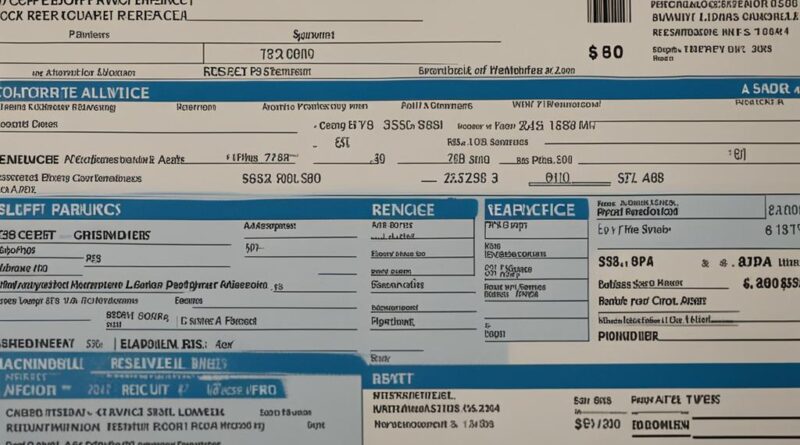Car Repair Receipt Essentials for Vehicle Owners
Clear communication and documentation are crucial for auto repair businesses. Providing customers with detailed receipts helps build trust, keeps accurate records, and ensures transparency. A well-structured car repair receipt should include the shop’s name, address, and contact information, as well as the customer’s name and contact information. It should also feature the date of the invoice, invoice number, repair order number, vehicle details (make, model, year, VIN, license plate number), and a comprehensive list of services performed with associated costs. It’s important to include labor charges, parts and materials used, payment due date, accepted payment methods, and any warranty terms. By providing customers with detailed receipts, auto repair businesses can foster trust and maintain organized records.
Key Takeaways:
- A well-structured car repair receipt includes essential information such as shop details, customer details, invoice and repair order numbers, and vehicle details.
- The receipt should provide a comprehensive list of services performed, including associated costs, labor charges, and parts/materials used.
- It’s important to include the payment due date, accepted payment methods, and any warranty terms on the receipt.
- Clear and detailed receipts help build trust with customers and maintain organized records for the auto repair business.
- By providing customers with detailed receipts, auto repair businesses can ensure transparency in billing and enhance customer satisfaction.
The Importance of Clear Communication in Auto Repair Shops
Clear communication is essential in auto repair shops to differentiate themselves and build trust with customers. Beyond excellent customer service, providing clean and clear documentation, including detailed invoices and receipts, helps customers feel informed and confident in their decision-making. By creating comprehensive invoices, including a list of services performed with associated costs and transparent breakdowns of labor charges and parts/materials, auto repair businesses can ensure transparency in billing. This level of detail helps customers understand where their money is allocated within the repair work and builds trust in the repair shop’s practices.
Effective communication is a cornerstone of successful auto repair businesses. The ability to clearly convey information about services, pricing, and billing practices is key to establishing customer trust and satisfaction. One of the primary ways auto repair shops can achieve this is through the provision of detailed invoices and receipts. These documents serve as tangible proof of the work performed and the costs associated with it, allowing customers to make informed decisions and understand the value they are receiving.
A comprehensive invoice provides a breakdown of the repairs or services rendered, including the specific tasks performed, the parts/materials used, and the associated costs. This level of detail not only informs the customer but also allows them to verify the accuracy of the billing and have a complete understanding of the services provided. It eliminates any confusion or ambiguity and enables customers to make informed decisions about the repairs or services they require.
Moreover, transparent billing builds trust between the customer and the auto repair business. When customers receive detailed invoices that clearly show how their money is being used, they are more likely to trust the repair shop and feel confident that they are being treated fairly. This transparency fosters long-term relationships, as customers appreciate the honesty and integrity demonstrated by the shop.
Clear communication and detailed documentation also benefit the auto repair business itself. By maintaining comprehensive invoices and receipts, businesses can keep accurate records of the services rendered, which can be useful for future reference, warranty claims, or potential disputes. Additionally, detailed documentation helps businesses track their financials effectively, ensuring that all expenses and revenue are accurately recorded.
Overall, clear communication and detailed documentation are crucial factors in building customer trust and establishing a reputable auto repair business. By providing comprehensive invoices and receipts, businesses not only enable their customers to make informed decisions but also ensure transparency, accuracy, and trust in their billing practices.
“Clear communication is the foundation of a successful customer-business relationship. In auto repair shops, it is particularly important to provide detailed documentation and invoices to keep customers informed and build trust. This transparency not only enhances customer satisfaction but also contributes to the overall success of the business.”
– Peter Johnson, Owner of Johnson’s Auto Repair
Creating a Professional Auto Repair Invoice
A professional auto repair invoice is essential for accurate billing and ensuring customer satisfaction. It should be clean, yet detailed, providing all the necessary information for both the shop and the customer. By following best practices and using an invoice template, you can streamline your invoicing process and present a polished and organized document.
Key Components of a Professional Auto Repair Invoice
When creating an auto repair invoice, include the following key details:
- Shop Information: prominently display your shop’s name, logo, address, and contact information at the top of the invoice.
- Customer Information: include the customer’s name, address, phone number, and email address to ensure accurate identification and communication.
- Invoice Date, Number, and Repair Order Number: clearly state the date the invoice was issued, along with a unique invoice number and repair order number for reference.
- Vehicle Details: provide the make, model, year, VIN (Vehicle Identification Number), and license plate number of the customer’s vehicle to avoid any confusion.
- Detailed Line Items: list all the services performed, along with their associated costs, in a clear and itemized manner. Include labor charges, part/material descriptions, quantities, unit costs, total costs, and any additional charges such as taxes or fees.
- Subtotal: calculate and display the subtotal of all costs before taxes or fees. This provides transparency and helps customers understand the breakdown of their expenses.
- Taxes: specify any applicable taxes and include them in the final amount due to accurately reflect the total cost.
- Payment Due Date and Accepted Payment Methods: clearly state the payment due date to avoid any confusion or delays. Additionally, outline the accepted payment methods to facilitate a smooth payment process for your customers.
- Warranty Terms: if your shop offers any warranties or guarantees, include the terms and conditions to inform customers of their rights and potential coverage.
By including all these key components, your auto repair invoice will convey professionalism, establish transparency, and provide a clear record of the services rendered.
Benefits of Using an Invoice Template
Using an invoice template can save you time and effort while ensuring consistency and professionalism. An invoice template provides a pre-designed format with placeholders for all the necessary information, allowing you to simply fill in the details for each unique invoice. This saves you from reinventing the wheel for every invoice and helps you maintain a standardized layout across all your invoices.
There are various invoice templates available online, catering specifically to auto repair businesses. These templates often include pre-defined sections for shop information, customer information, invoice details, service descriptions, and payment terms. By utilizing an invoice template, you can create professional-looking invoices efficiently and maintain a cohesive style throughout your documentation.
Ensure that your chosen invoice template is customizable so that you can easily add your shop’s branding elements, such as your logo or custom color scheme. This personal touch adds an extra touch of professionalism and helps reinforce your brand identity.
With a well-designed invoice template at your disposal, you can streamline your invoicing process, improve efficiency, and create a positive impression on your customers.

“A professional auto repair invoice reflects your commitment to professionalism and provides customers with a clear and detailed summary of the services rendered.”
Creating a professional auto repair invoice is crucial for accurate and organized billing. By ensuring all the necessary details are included and utilizing an invoice template, you can present clean, detailed, and well-structured invoices to your customers. A professional invoice not only boosts customer confidence and satisfaction but also sets you apart from competitors in the auto repair industry.
Auto Repair Invoice Templates for Easy Use
Utilizing pre-made auto repair invoice templates can simplify the invoicing process for auto repair businesses. These templates are designed specifically for mechanics and auto repair shops and include all the essential elements required in an invoice. There are various templates available, including those for general auto repair services, mechanics, auto detailing, car parts, and auto service.
These templates typically include fields for the shop’s contact information, customer details, invoice number and date, services rendered with associated costs, labor charges, cost of parts used, total amount due including taxes, payment terms, and accepted payment methods. By using these templates, auto repair businesses can save time and ensure consistent and professional invoicing practices.
Benefits of Using Auto Repair Invoice Templates:
- Saves time by providing a ready-to-use template
- Ensures consistency in invoicing practices
- Includes all essential elements required in an invoice
- Professional appearance and layout
- Customizable to match the branding of the repair shop
- Helps accurately track and record services rendered
- Facilitates transparent and organized billing
By utilizing auto repair invoice templates, mechanics and auto repair shops can streamline their invoicing process, ensuring accuracy and professionalism in their financial transactions. These templates provide a convenient and efficient solution for creating invoices, saving time and effort for the business while maintaining clear and detailed records for customers.
The Role of Oil Change Receipts in Vehicle Maintenance
Oil change receipts serve a crucial role in vehicle maintenance by recording service details and providing proof of maintenance. In today’s growing oil change market, these receipts act as tangible evidence that a car has undergone the necessary oil change at recommended intervals.
Oil change receipts play a vital role in various aspects of vehicle ownership and maintenance:
- Proof of Service: Oil change receipts serve as concrete proof that a vehicle has received regular oil changes, which is vital for maintaining warranties and supporting insurance claims.
- Vehicle History: Prospective buyers often request documentation of a car’s maintenance history. A complete record of oil changes demonstrated through receipts can significantly enhance a vehicle’s resale value.
- Maintenance Planning: Oil change receipts contribute to the overall maintenance history of a vehicle, aiding in maintenance planning and ensuring adherence to recommended service intervals.
- Diagnosis of Issues: An organized collection of oil change receipts helps mechanics and technicians diagnose potential issues by reviewing previous maintenance records.
Oil change receipts not only provide essential documentation but also play a critical role in ensuring vehicle longevity, warranty claims, and maintenance planning. By keeping a detailed record of oil changes, vehicle owners can establish a comprehensive maintenance history, leading to increased vehicle resale value and improved maintenance planning.
Statistics on the Importance of Oil Change Receipts:
According to a study by AAA, providing a complete maintenance history increases a vehicle’s resale value by up to 10%. Oil change receipts are a significant part of this documentation, demonstrating proactive maintenance.
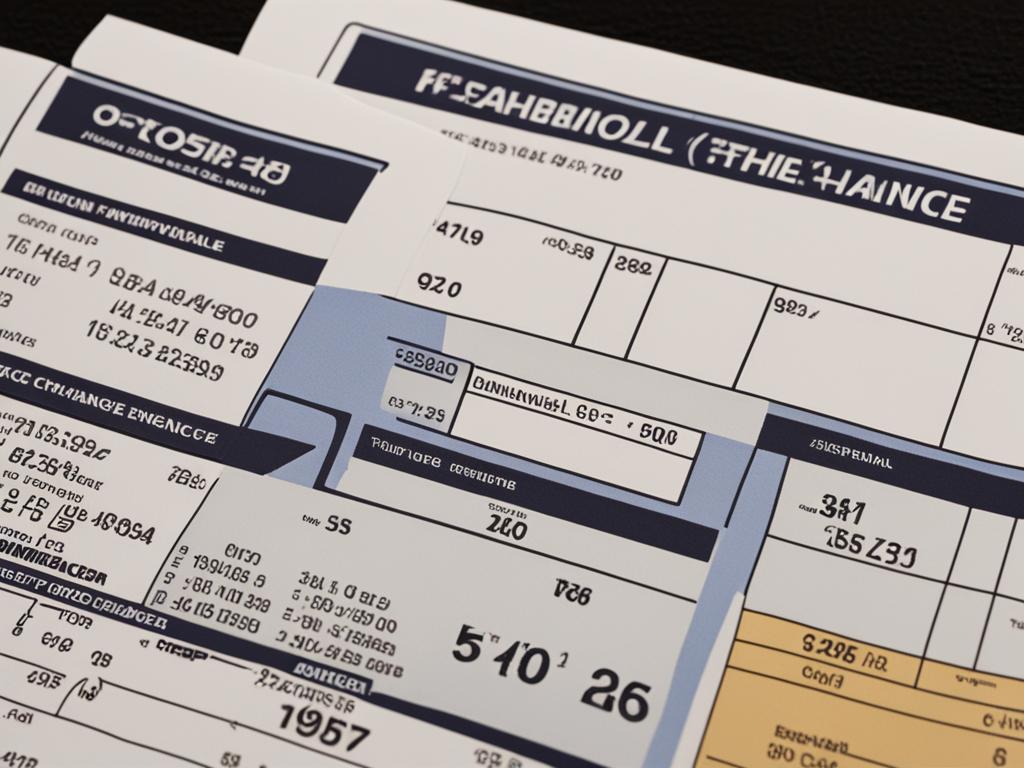
Essential Details to Include in an Oil Change Receipt
An oil change receipt serves as a crucial record of the service provided. To ensure transparency and accountability, it is important to include the following essential details:
- Service Provider’s Name and Address: Provide the name and address of the auto repair shop or service provider.
- Customer’s Name and Contact Information: Include the customer’s name and contact details for future reference.
- Service Date: Specify the date on which the oil change service was performed.
- Vehicle Details: Include comprehensive information about the vehicle, such as the make, model, year, VIN (Vehicle Identification Number), and license plate number.
- Current Odometer Reading: Record the odometer reading at the time of the oil change to track mileage.
- Type of Oil Used: Mention the type of oil used, whether it is synthetic, conventional, or any other specific type.
- Oil Filter Replacement: Indicate whether the oil filter was replaced during the service.
- Quantity of Oil Used: Specify the amount of oil used in the oil change process.
- Labor and Service Charges: Include the costs associated with labor and services performed during the oil change.
- Air Filter Replacement: If the air filter was replaced, make sure to note it on the receipt.
- Fluid Top-ups: If any other fluids, such as coolant or windshield washer fluid, were topped up during the service, include them on the receipt.
- Tire Rotation: If tire rotation was part of the oil change service, mention it as well.
- Inspection Report: Provide a brief summary of any findings from the inspection conducted during the service.
- Mechanic’s Signature: Have the mechanic sign the receipt to confirm the completion of the service.
- Customer’s Authorization: Include a section for the customer to acknowledge and authorize the services performed and associated charges.
By including all these essential details in an oil change receipt, both the service provider and customer have a clear and comprehensive record of the oil change service performed.
| Details | Description |
|---|---|
| Service Provider’s Name and Address | The name and address of the auto repair shop or service provider. |
| Customer’s Name and Contact Information | The customer’s name and contact details for future reference. |
| Service Date | The date on which the oil change service was performed. |
| Vehicle Details | Comprehensive information about the vehicle, including make, model, year, VIN, and license plate number. |
| Current Odometer Reading | The odometer reading at the time of the oil change to track mileage. |
| Type of Oil Used | The type of oil used, such as synthetic, conventional, or specific brand/type. |
| Oil Filter Replacement | Indication of whether the oil filter was replaced during the service. |
| Quantity of Oil Used | The amount of oil used in the oil change process. |
| Labor and Service Charges | The costs associated with labor and services performed during the oil change. |
| Air Filter Replacement | Whether the air filter was replaced during the service. |
| Fluid Top-ups | Any other fluids topped up during the service, such as coolant or windshield washer fluid. |
| Tire Rotation | Indication of whether tire rotation was performed during the oil change service. |
| Inspection Report | A brief summary of any findings from the inspection conducted during the service. |
| Mechanic’s Signature | The mechanic’s signature to confirm the completion of the service. |
| Customer’s Authorization | A section for the customer to acknowledge and authorize the services performed and associated charges. |
Streamlining Oil Change Receipt Management with Digital Solutions
Efficient receipt management is essential for auto repair businesses to ensure smooth operations and maintain accurate records. With the advent of digital solutions, such as Torque 360, managing oil change receipts has become more streamlined and convenient than ever before.
Digital receipt management offers a range of benefits, including improved efficiency, enhanced organization, and access to valuable data analytics. By utilizing tools like Torque 360, auto repair businesses can automate the creation of receipts, reducing the risk of manual entry errors and saving valuable time. These digital solutions allow for the electronic organization and storage of receipts, eliminating the need for cumbersome physical files and paperwork.
Implementing a digital receipt management system, such as Torque 360, provides businesses with valuable insights into spending patterns and customer behavior. By analyzing data analytics, auto repair shops can identify opportunities for cost savings and revenue increase. These insights enable businesses to make informed decisions and optimize their operations, resulting in improved profitability.
Torque 360, specifically designed for the automotive industry, offers a comprehensive suite of tools to streamline workshop management. From receipt creation and organization to data analysis and reporting, Torque 360 simplifies administrative tasks and ensures a seamless workflow.
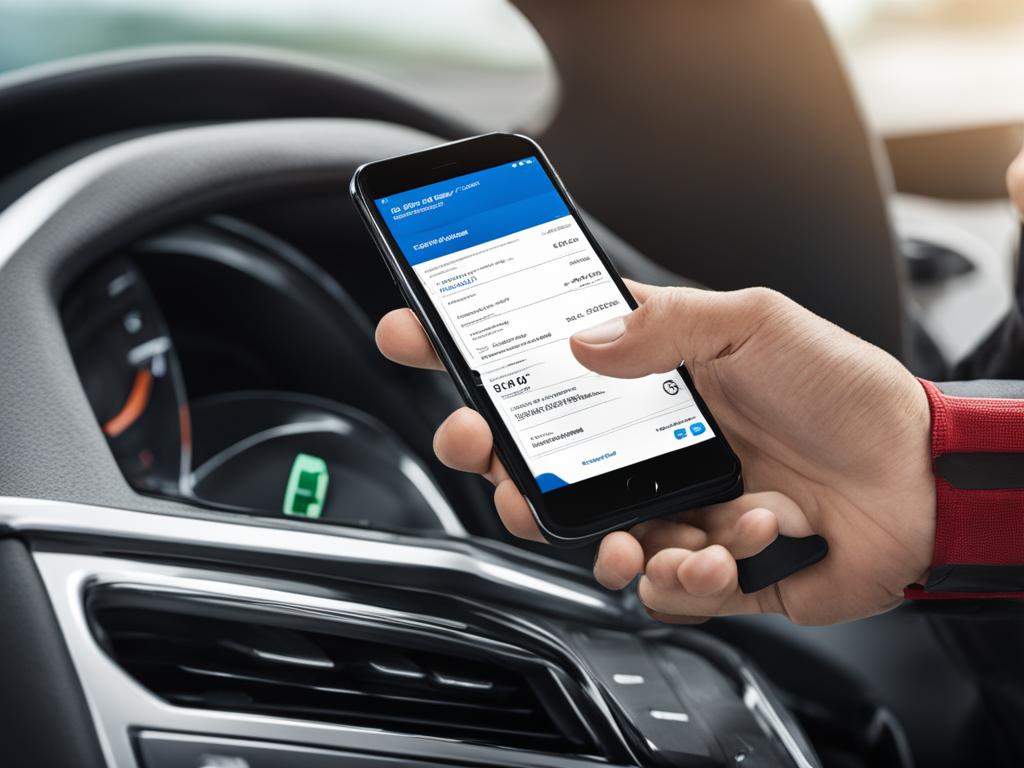
By embracing digital solutions like Torque 360, auto repair businesses can optimize their receipt management processes, leading to enhanced efficiency, cost savings, and increased revenue. These tools simplify administrative tasks, promote organization, and enable businesses to make data-driven decisions. Streamlining receipt management is essential for ensuring the smooth operation of auto repair businesses and maintaining accurate records.
| Benefits of Digital Receipt Management with Torque 360 |
|---|
| Increased efficiency |
| Improved organization |
| Data analytics for valuable insights |
| Cost savings |
| Streamlined workshop management |
Best Practices for Organizing and Storing Oil Change Receipts
Organizing and storing oil change receipts effectively is crucial for both personal and business purposes. By implementing best practices, you can ensure easy access to important records, facilitate efficient financial management, and maintain compliance. Here are some recommendations for organizing and storing your oil change receipts:
1. Utilize Digital Storage
Take advantage of digital storage options by scanning or photographing your oil change receipts. Create electronic folders or use specialized receipt management apps or cloud-based storage services to organize and store your digital receipts conveniently.
2. Employ Physical Storage Solutions
For those who prefer physical copies, consider using accordion files, filing cabinets, or labeled envelopes to categorize and store your oil change receipts. Organize them by date or type for easy retrieval.
3. Create Backups
To mitigate the risk of losing important receipts, create backups. Save digital copies on multiple devices or in secure cloud storage. For physical receipts, consider making duplicates and storing them in separate locations.
4. Regularly Review and Purge
Regularly review your oil change receipts and purge those that are no longer needed. Keeping your receipt records clutter-free will ensure efficient management and compliance.
5. Integrate Receipts into Financial Management
Integrate your oil change receipts into your overall financial management system. By organizing and maintaining thorough receipt records, you can accurately track expenses, facilitate tax preparation, and monitor your vehicle maintenance costs.
By implementing these best practices, you can streamline your oil change receipt management, ensuring easy access, efficient organization, and accurate record-keeping. Whether you choose digital or physical storage methods, maintaining a systematic approach to organizing and storing your receipts will contribute to efficient financial management and compliance.

Using a Template for Oil Change Receipts
Streamlining your oil change receipt management process can be made easier by using a template. Templates provide a standardized format for your receipts, ensuring accuracy and consistency in record-keeping. To get started:
Step 1: Download and Customize the Template
Begin by downloading an oil change receipt template that suits your needs. Look for a template that allows customization and includes fields for the necessary information. Customization options may include adding your service provider details, logo, and any specific information required by your business.
Step 2: Printing the Receipt
Once you have customized the template, you can print it on quality paper to create physical copies for your records and customers. Ensure that the printed copies are clear and legible, reflecting a professional image for your business.
Step 3: Filling in the Receipt
After each oil change service, fill in the receipt with the relevant details. Make sure to include the customer’s name and contact information, the date of service, the vehicle details, the type of oil used, any additional services performed, labor charges, and the total cost. Double-check the accuracy and completeness of the information before giving the receipt to the customer.
Step 4: Saving and Storing Receipts
It is important to make digital copies of the receipts for backup purposes. You can scan the printed receipts or save them as digital files. Organize both the physical and digital receipts systematically for easy access and retrieval when needed. Consider using dedicated receipt management software or cloud storage solutions to keep your receipts organized and secure.
Step 5: Convenience and Accuracy
Using a template for oil change receipts offers convenience and improves accuracy in receipt management. By streamlining the process with a standardized format, you can save time and ensure that all necessary information is included in each receipt. This helps create a professional image for your business and provides a clear record of services provided to both your customers and your records.
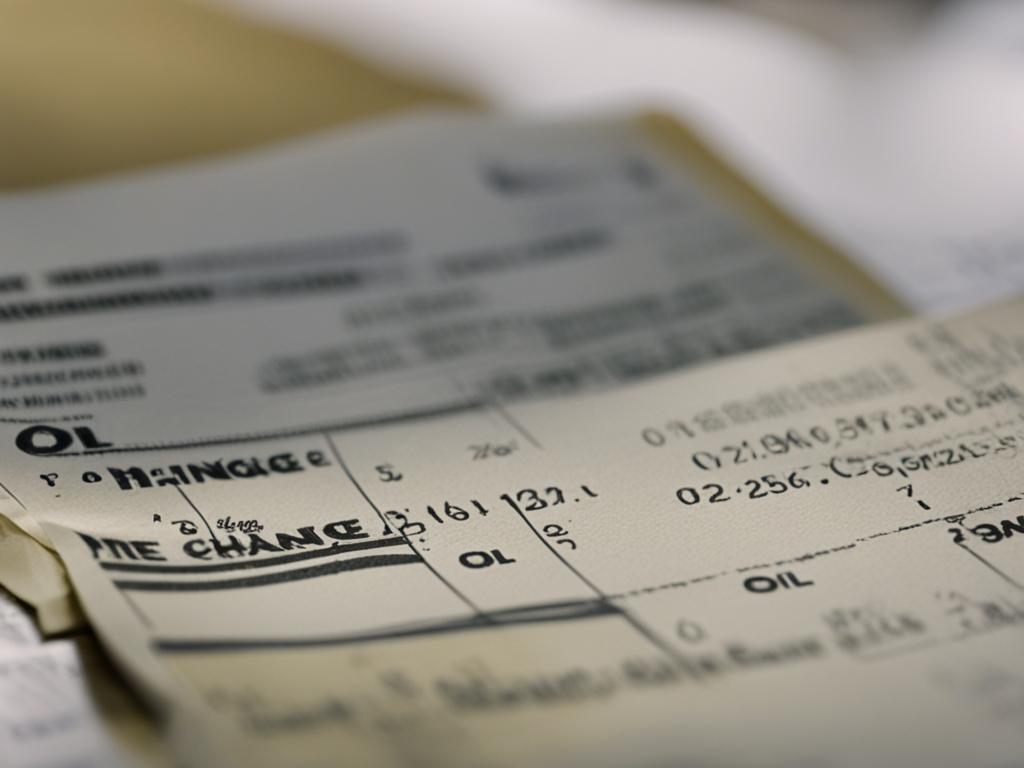
Leveraging Technology for Simplified Receipt Management
Leveraging technology can greatly simplify receipt management for auto repair businesses. By utilizing advanced tools like Torque360, businesses can take advantage of numerous benefits, including improved efficiency, automation of administrative tasks, streamlined organization, and access to valuable data analytics.
“Technology has revolutionized the way we manage receipts in the auto repair industry. With the right tools, businesses can optimize their operations and enhance their overall productivity.”
One of the primary advantages of technology-driven receipt management is increased efficiency. By automating the creation of receipts, businesses can significantly reduce manual entry errors and save precious time. This automation ensures that the receipt creation process is streamlined and error-free.
Receipt management platforms, like Torque360, offer comprehensive features that simplify the organization of receipts. These platforms allow for easy categorization, search, and retrieval, eliminating the need for traditional physical filing systems. Additionally, digital storage provides businesses with a more organized and clutter-free approach to receipt management.
Another valuable aspect of utilizing technology for receipt management is data analytics. Modern tools like Torque360 offer powerful data analytics capabilities that allow businesses to gain insights into their spending patterns. By analyzing this data, businesses can identify areas of potential cost savings and make informed decisions regarding their operational expenses.
Key Benefits of Technology-Driven Receipt Management:
- Efficiency: Automate receipt creation and reduce manual entry errors.
- Automation: Streamline administrative tasks and save time.
- Organization: Categorize, search, and retrieve receipts effortlessly.
- Data Analytics: Gain insights into spending patterns for informed decision-making.
- Cost Savings: Identify opportunities for cost reduction based on analytics.
By leveraging technology for receipt management, auto repair businesses can streamline their administrative tasks, improve overall efficiency, and achieve significant cost savings. Adopting tools like Torque360 enables businesses to optimize their operations and stay ahead in a fast-paced industry.
“Technology-driven receipt management is a game-changer for auto repair businesses. It simplifies administrative tasks, enhances efficiency, and enables businesses to make data-driven decisions.”

Frequently Asked Questions About Oil Change Receipts
Here are answers to some frequently asked questions about oil change receipts:
1. Are oil change receipts printable?
Yes, oil change receipts are usually provided as printable documents. You can request a printed copy from the service provider or ask for a digital receipt that you can print yourself.
2. How do I calculate labor costs for a mechanic?
Labor costs for a mechanic are typically calculated by multiplying the number of hours spent on the repair or service by the mechanic’s hourly rate. The hourly rate may vary depending on the shop and the level of expertise required for the job.
3. What are the best file types for invoices?
The best file types for invoices are usually PDF (Portable Document Format) and DOCX (Microsoft Word Document). These formats ensure that the invoice looks professional and can be easily shared and opened by recipients regardless of the software they use.
4. What is the best invoicing app for mechanics?
There are several invoicing apps available that cater specifically to mechanics and auto repair businesses. Some popular options include:
- Torque Pro
- Shopmonkey
- Auto Repair Bill
- RepairDesk
These apps offer features such as customizable invoice templates, payment tracking, inventory management, and customer communication tools to streamline invoice generation and management processes.
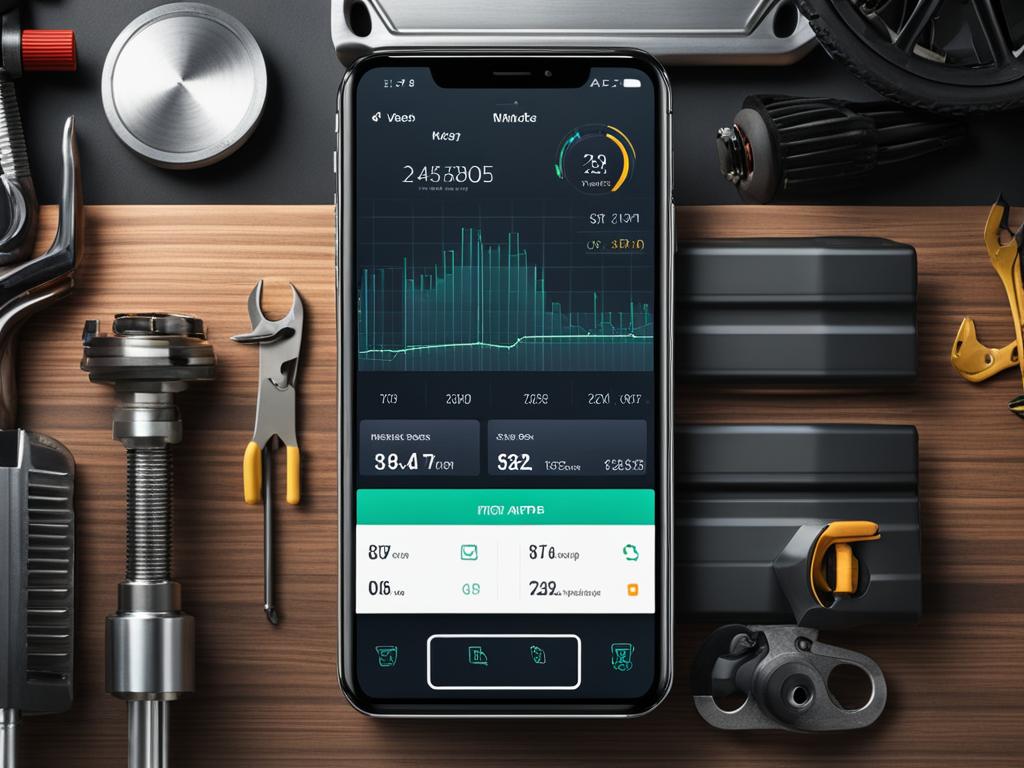
| App Name | Key Features | Pricing |
|---|---|---|
| Torque Pro | Customizable invoices, payment tracking, inventory management, customer communication | Free basic plan Additional features available at a cost |
| Shopmonkey | CRM, invoicing, labor guide, parts ordering, reporting | Contact for pricing details |
| Auto Repair Bill | Invoicing, inventory management, estimating, reporting, appointment scheduling | Starting at $49/month |
| RepairDesk | Invoicing, CRM, inventory management, reporting, marketing tools | Starting at $35/month |
These apps offer different features and pricing plans, so it’s recommended to explore their websites and compare their offerings to find the best fit for your specific needs.
Conclusion
Car repair receipts, including oil change receipts, play a vital role in the auto repair industry. Clear communication and detailed documentation are essential for building trust with customers and maintaining accurate records.
By providing well-structured and detailed receipts, auto repair businesses can foster trust, enhance transparency in billing, and keep organized maintenance records. These receipts should include the shop’s name, address, and contact information, as well as the customer’s name and contact information. It’s important to list the date of the invoice, repair order number, vehicle details, and a comprehensive breakdown of services performed with associated costs. Labor charges, parts and materials used, payment due date, accepted payment methods, and any warranty terms should also be included.
Leveraging technology and digital solutions, such as Torque360, can greatly simplify receipt management, streamlining administrative tasks and providing valuable insights. These tools automate receipt creation, reduce errors, and organize receipts electronically. By following best practices for organizing and storing receipts, businesses can ensure easy access to important records and facilitate efficient financial management. Ultimately, car repair receipts are indispensable tools that streamline business operations and maintain a clear record of services provided.
FAQ
What should a car repair receipt include?
A car repair receipt should include the shop’s name, address, and contact information, as well as the customer’s name and contact information. It should also feature the date of the invoice, invoice number, repair order number, vehicle details (make, model, year, VIN, license plate number), and a comprehensive list of services performed with associated costs. Additionally, labor charges, parts and materials used, payment due date, accepted payment methods, and any warranty terms should be included.
How does clear communication benefit auto repair shops?
Clear communication in auto repair shops helps differentiate businesses and build trust with customers. Providing detailed invoices and receipts ensures transparency and helps customers make informed decisions. Comprehensive invoices, with transparent breakdowns of labor charges and parts/materials, allow customers to understand the allocation of their money. This transparency fosters trust in the repair shop’s practices.
What should a professional auto repair invoice include?
A professional auto repair invoice should include the shop’s name and logo, address, and contact information, as well as the customer’s name and contact information. It should also feature the date it was issued, invoice number, repair order number, vehicle details (make, model, year, VIN, license plate number), and a comprehensive list of services performed with associated costs. The invoice should also include labor charges, part/material description, quantity, unit costs, total costs, and any applicable taxes. Additionally, the invoice should state the payment due date, accepted payment methods, and any warranty terms provided by the shop.
Are there templates available for auto repair invoices?
Yes, there are various auto repair invoice templates available for mechanics and auto repair shops. These templates are designed specifically for the industry and include fields for shop contact information, customer details, invoice number and date, services rendered with associated costs, labor charges, part costs, total amount due including taxes, payment terms, and accepted payment methods. Using these templates can save time and ensure consistent and professional invoicing practices.
Why are oil change receipts important?
Oil change receipts serve as proof of service and help maintain vehicle maintenance records. They are particularly crucial for maintaining a vehicle’s warranty and influencing its resale value. Oil change receipts provide evidence of proactive maintenance and assist in planning future service and identifying potential issues. They also serve as documentation for insurance claims, aiding in the process.
What information should be included in an oil change receipt?
An oil change receipt should include the service provider’s name and address, the customer’s name and contact information, the service date, comprehensive vehicle details (make, model, year, VIN), and the current odometer reading. Other important details include the type of oil used, whether the oil filter was replaced, the quantity of oil used, any additional services performed (such as air filter replacement or tire rotation), labor and service charges, inspection findings, the mechanic’s signature, and the customer’s authorization or acknowledgment of the services and charges.
How can digital solutions help with oil change receipt management?
Digital receipt management tools like Torque 360 can streamline the receipt creation process, reduce errors, and provide efficient organization and data analytics. These tools automate administrative tasks, save time, and offer cost-saving opportunities and increased revenue for auto repair businesses. By embracing digital solutions, businesses can optimize their receipt management processes and overall workshop management.
What are the best practices for organizing and storing oil change receipts?
To effectively organize and store oil change receipts, it is recommended to utilize both digital and physical storage methods. Digital options include scanning or photographing receipts and organizing them in electronic folders or using specialized receipt management apps or cloud-based storage services. Physical storage options include using accordion files, filing cabinets, or envelopes to categorize receipts by date or type. Creating backups, either on multiple devices or in the cloud, is important for safeguarding important receipts. Regularly reviewing and purging unnecessary receipts helps maintain clutter-free records and facilitates efficient financial management and compliance.
How can I use a template for oil change receipts?
Using a template for oil change receipts simplifies the receipt creation and management process. To use a template, download it and customize it with your service provider details, logo, and any required information. Once customized, the template can be printed on quality paper to create physical copies for records and customers. After each oil change service, fill in the receipt with the relevant details, ensuring accuracy and completeness. Make digital copies of the receipts for backup and organize both physical and digital receipts systematically for easy access and retrieval when needed. Utilizing a template offers convenience and improves accuracy in receipt management.
How can technology simplify receipt management for auto repair businesses?
Technology, such as receipt management platforms like Torque360, provides significant benefits for auto repair businesses. These tools improve efficiency, automate administrative tasks, streamline organization, and offer data analytics capabilities. By utilizing technology for receipt management, businesses can save time, reduce errors, and gain insights into spending patterns, leading to cost savings and informed decision-making.
What are some frequently asked questions about oil change receipts?
Common questions about oil change receipts include whether they are printable, how to calculate labor costs for a mechanic, the best file types for invoices, and the best invoicing app for mechanics.

